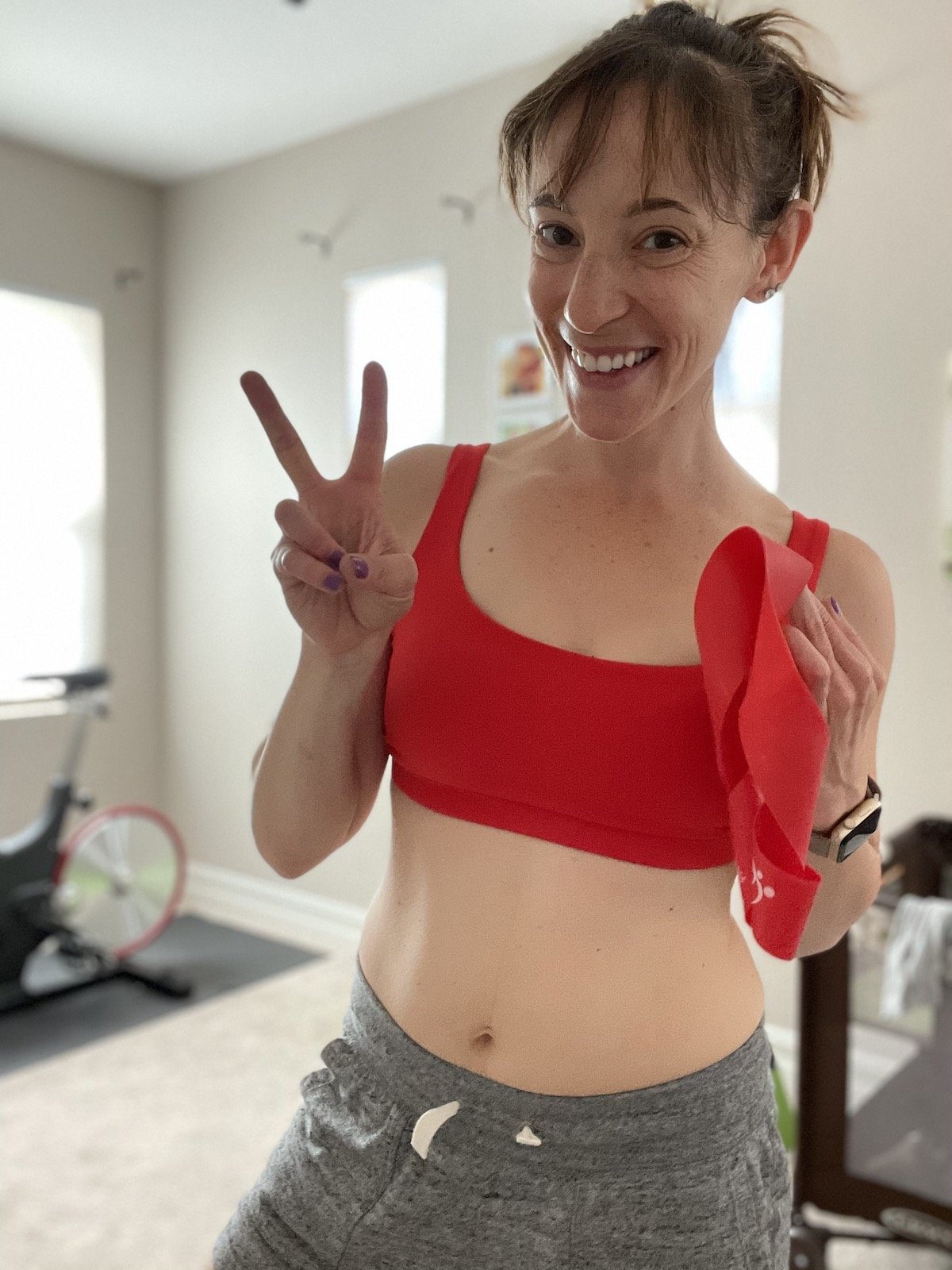2 Glute Exercises During Pregnancy and Postpartum
The glutes are my favorite muscle group to train, especially during pregnancy and postpartum. But, there is so much more to training these three major muscles than the way your pants fit in a pair of leggings :) Your glutes consist of three major muscles: glute maximum, glute medius, and glute minimus. They are responsible for extending your hips, pushing laterally, and rotating your body. This basically covers every functional movement, making them one of the most important muscle groups in the body. But, this important muscle system is often weak and overworked. Think of all the sitting we do throughout the day with our hips in a flexed position. Pregnancy and postpartum don't help, as the shift in our center of gravity can leave the glutes un-engaged. I often hear moms talk about having a flat or "weak" butt. But, glute focused functional training can really help strengthen the glutes, improve our posture, prevent low back pain, improve core/pelvic floor health, and increase our overall athletic performance.A lot of moms (including myself) tend to be a bit more quad dominant. My quads and hip flexors always feel crazy tight! I do a ton of sitting when feeding Micah or at a computer. When the quads and hip flexors get tight they can pull on the hip bone, tipping the pelvis forward, into a bit more of an anterior tilt of the pelvis. If we can calm these muscles down a bit and strengthen our backside, we can bring a bit more balance to the system. Strong glutes can help pull our pelvis into a better position (among many things!). This is actually something to consider in diastasis recti healing as well.If you're really looking to connect with your glutes and get maximum glute activation, I recommend adding the hip thrust and/or glute bridge to your routine. Maximum glute activation occurs at end-range hip extension, so one or both of these exercises are great. I like to incorporate variations of both. If a glute bridge does not feel great in your body as you progress in pregnancy, I recommend swapping out for the hip thrust.1. Hip thrust2. Glute bridgeHip thrust vs glute bridge: what is the difference? Love this video from SoheeFit. https://www.youtube.com/watch?v=iO9qZF0rzuEI’ve included some of my favorite variations below:
1. Bodyweight Hip Thrust
https://www.youtube.com/watch?v=Qe8n6g6gcsI
2. Mini band Hip thrust - wide stance or regular stancehttps://www.youtube.com/watch?v=GMoIkfo2nP4
3. B Stance Hip Thrust: Love this unilateral variation, really targeting the grounded foot.
https://www.youtube.com/watch?v=9rDq2uQdau0
4. Hip Thrust hold (isometric) - Hold for a 15 count at the top of the rep. Reminder to breathe and avoid bearing down on your Pelvic Floor.
5. Hip Thrust with Ball Squeeze: add a small pilates ball between your thighs. As you rise on the exhale breath, add a gentle squeeze to the pilates ball. The pilates ball is also a great way to incorporate the adductors, and connect to your pelvic floor/core.
6. Bodyweight or Banded Glute Bridgehttps://www.youtube.com/watch?v=evOnUDkq9f4
7. Glute Bridge with Ball squeezehttps://www.youtube.com/watch?v=ugC5CxhXfig&t=2s
8. Elevated Glute Bridge (recommend subbing out option once belly gets large). I tend to get more glute activation with this variation.
https://www.youtube.com/watch?v=Dks4Cl6NhV0
9. SL Glute Bridge (omit with any pelvic pain)
https://www.youtube.com/watch?v=zXG8HxPqOj8
Tune in to your body on these. A glute bridge felt great through my entire pregnancy, but may not feel great in your body. Honor that.Questions about training your glutes during pregnancy or postpartum? I'd love to chat. I work with clients 1:1 and will be kicking off Strong Mama Classes this Spring/Summer.
xoxo,
Erica

